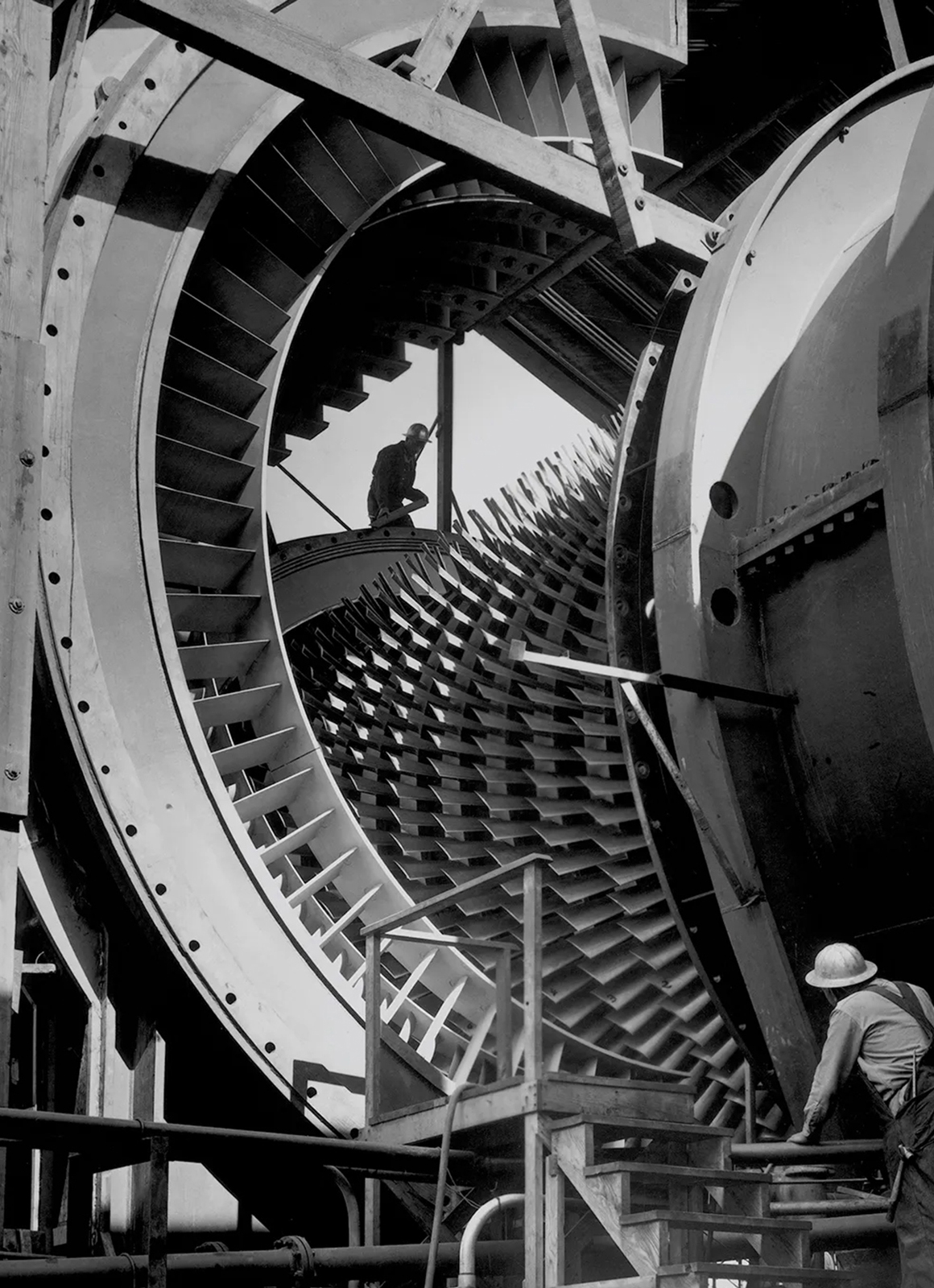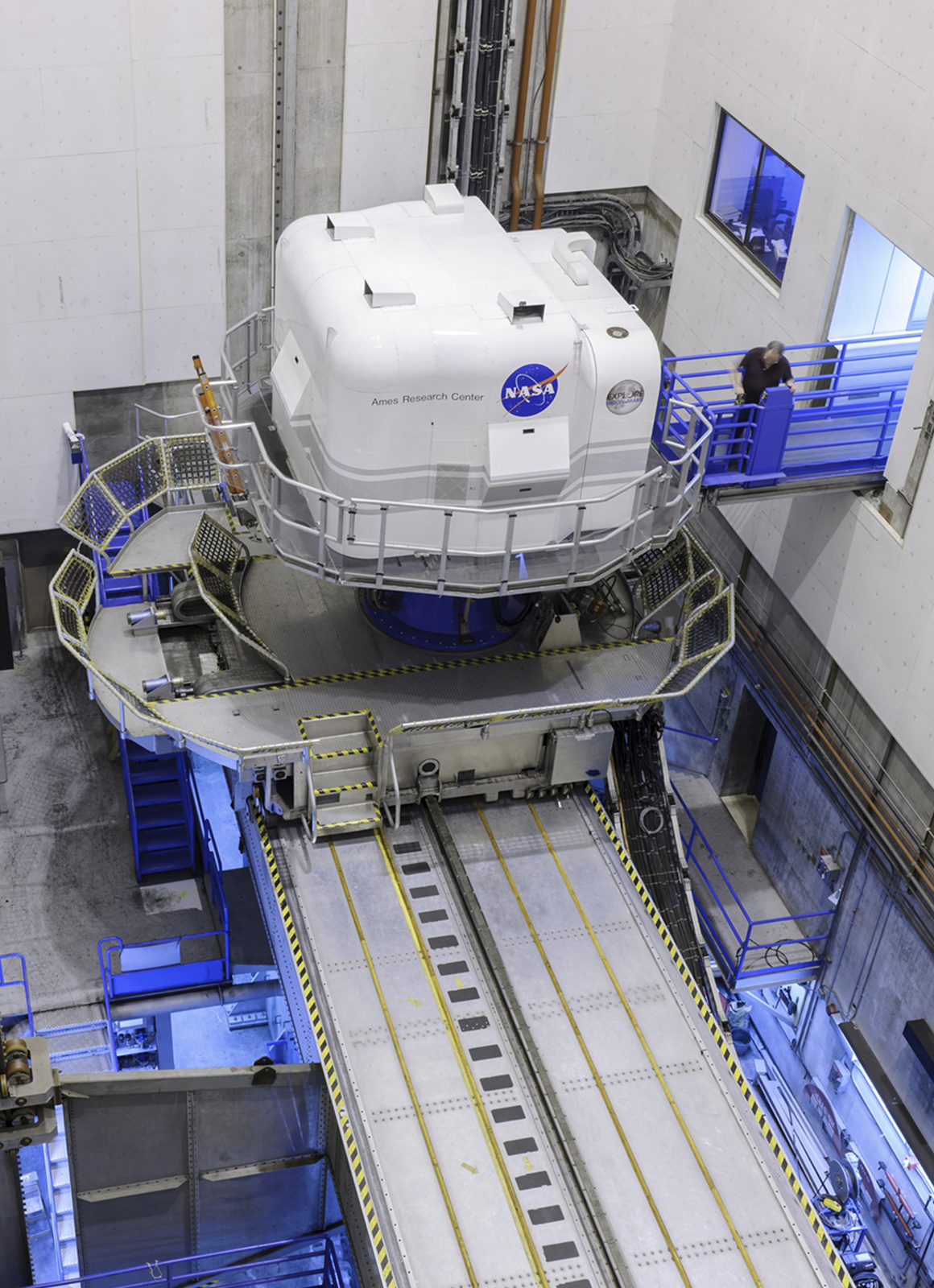III.
NASA Ames Research Center
NASA’s Ames Research Center was established in 1939 on a site adjacent to Naval Air Station Sunnyvale. It is the second laboratory of the National Advisory Committee for Aeronautics (NACA) and was named for the chair of the NACA, Joseph S. Ames, an influential aerodynamicist and the former president of Johns Hopkins University. The center became a part of the National Aeronautics and Space Administration when NASA was established in 1958. After Moffett Field was officially closed to military operations on July 1, 1994, all of the property was transferred from the Navy to NASA, except for the military housing buildings, which were reassigned to the U.S. Air Force.

As the U.S. Navy was building some of the world’s biggest wood structures to house its new fleet of patrol blimps, NACA embarked on the construction of the largest wind tunnels on Earth. Its first wind tunnel was completed in 1941 and was used during World War II to test the airflow of high-speed fighter aircraft. The 40-by-80-foot wind tunnel opened in June 1944. The 12-foot subsonic wind tunnel opened in 1946. The construction of the Ames Unitary Plan Wind Tunnel (UPWT) began in 1951 and was completed in 1956. That facility includes three separate tunnels, the 11-by 11-foot Transonic, 9-by-7-foot Supersonic, and the 8-by-7-foot Supersonic test sections. An 80-by-120-foot tunnel was added to the 40-by-80-foot tunnel in 1987. The 12-foot pressure tunnel was rebuilt in the 1980s and rededicated in 1995.





Generations of flight vehicles have been tested and refined at the Ames Research Center, from commercial and military aircraft to NASA rockets and craft from every crewed spaceflight program. Innovations in supersonic flight, deicing research, which was critical to the effective technology used in the Pacific during World War II, and the development of the swept wing have all been made possible by the pioneering research and analysis completed at Ames’s advanced facilities.








Ames’s unparalleled research infrastructure and diverse areas of expertise are vital to numerous NASA missions. The Vertical Motion Simulator is the world's largest flight simulator for high-fidelity testing of new and experimental aircraft and spacecraft designs. Every NASA shuttle pilot received training in the VMS, and future Moon-bound astronauts may as well. NASA’s Kepler space telescope, led by Ames, discovered thousands of planets orbiting other stars and revealed that the galaxy holds more planets than stars. Artemis and the pathfinding small satellite CAPSTONE, which successfully tested a navigation technology akin to Earth’s GPS, advanced a capability that could help future space missions more efficiently navigate at the Moon.
Ames is the lead center for NASA’s first robotic lunar rover, VIPER (Volatiles Investigating Polar Exploration Rover), which will map water and other resources on the Moon. Ames scientists explore the universe with the James Webb Space Telescope and study how Earth life responds to the conditions of space aboard the International Space Station. The Starling mission will test Ames-developed technologies that will let multiple spacecraft operate as a unit, without direct control from Earth—tools that are essential to the HelioSwarm mission to study the Sun. Ames supports the Mars Sample Return mission bringing rocks back from Mars for study on Earth, and Dragonfly, which will make flights of exploration across Saturn’s moon, Titan.
The arc jet—a specialized high-energy wind tunnel—helps users design, develop, and test thermal protection materials and heat shields for spacecraft entering an atmosphere. Computer simulation goes hand in hand with wind tunnel testing, and NASA’s Advanced Supercomputing division at Ames provides world-class supercomputing resources and services. They are customized to meet NASA’s needs for aeronautics, space exploration, and Earth and space science.



Ames transformed air traffic management by helping to optimize the flow of flights at airports, saving time for travelers and over one million gallons of fuel during a four-year test at a single U.S. airport, called Airspace Technology Demonstration 2 (ATD-2). Ames’s work in drone traffic management is revolutionizing the way the nation’s airspace is used. UTM—the Unmanned Aircraft Systems Traffic Management Project—created a research platform to help manage large numbers of drones flying at low altitude along with other airspace users. Their findings will help package delivery or emergency response drones fly safely near helicopters, airplanes, and nearby airports. Building on earlier work by Ames researchers, the center leads NASA’s Advanced Capabilities for Emergency Response Operations (ACERO) project, using drones and advanced aviation technologies to improve wildland firefighting coordination and operations. The NASA Earth Exchange (NEX) is a Big Data initiative providing unprecedented insights into Earth’s systems using NASA’s supercomputers at Ames.
Ames also hosts the NASA Research Park, a world-class shared-use R&D hub for industry, academia, and nonprofits that collaborate with NASA to meet mission needs. Residents include the U.S. Geological Survey, Carnegie Mellon University, University of California, Berkeley, and numerous industry partners. For more information about the extraordinary history and inspiring impact of NASA’s Ames Research Center please visit: https://www.nasa.gov/reference/ames-history/